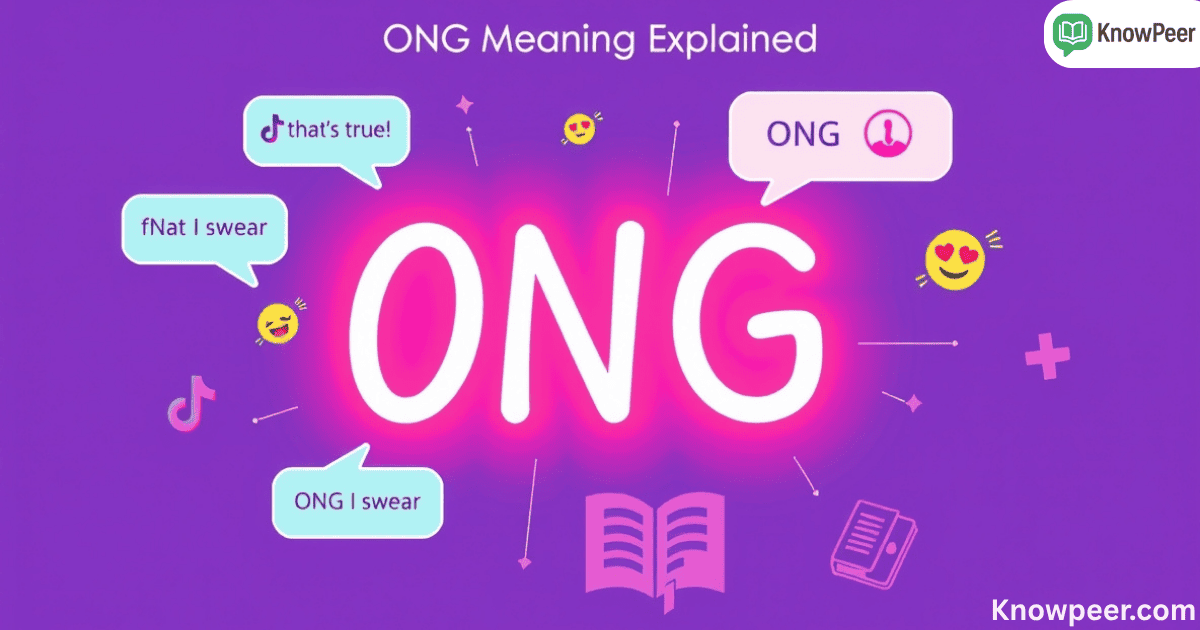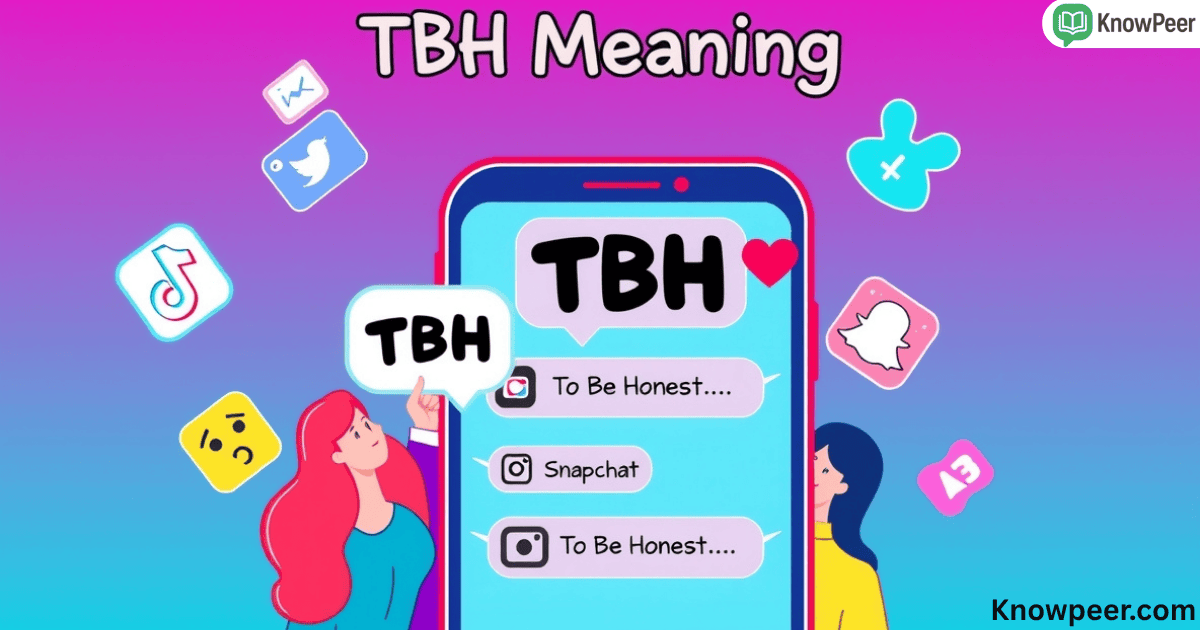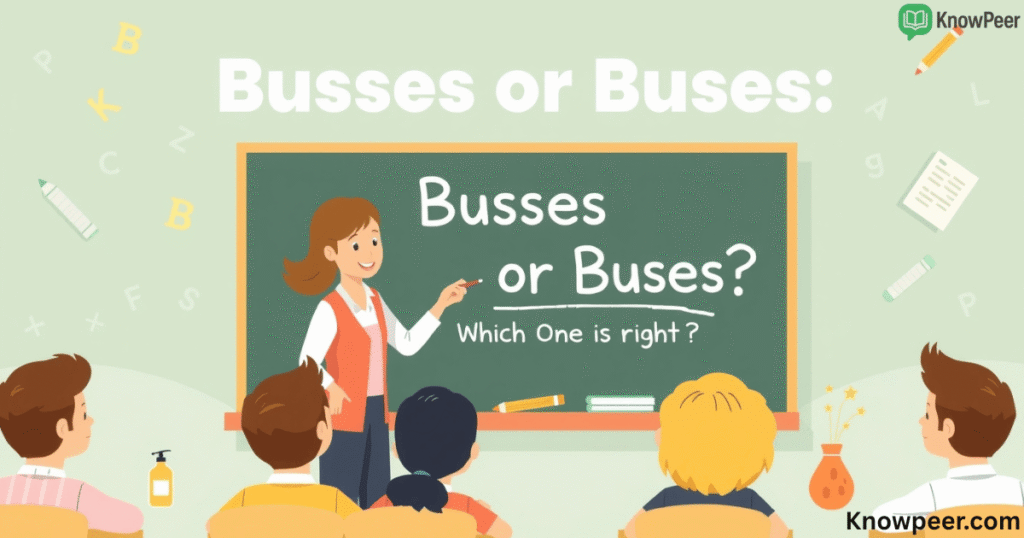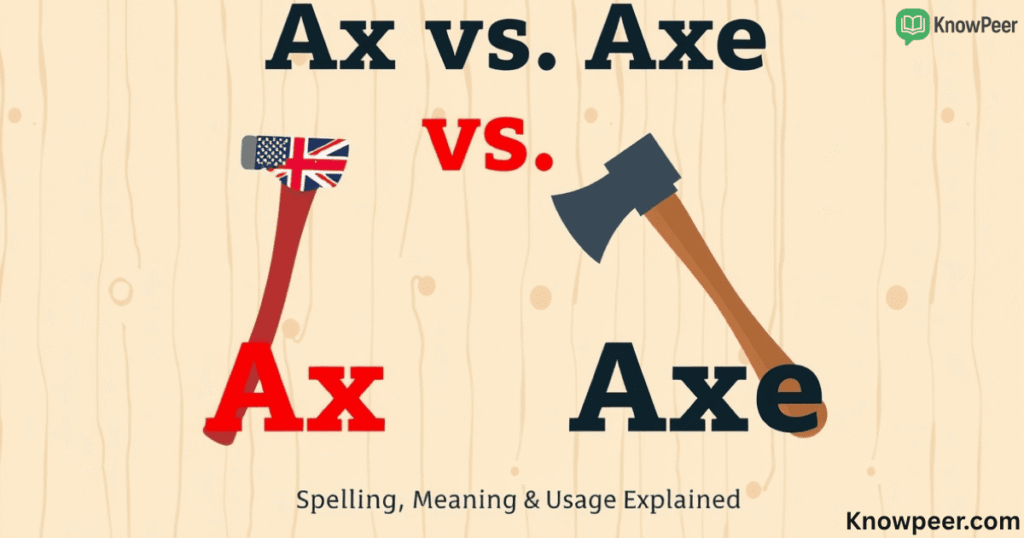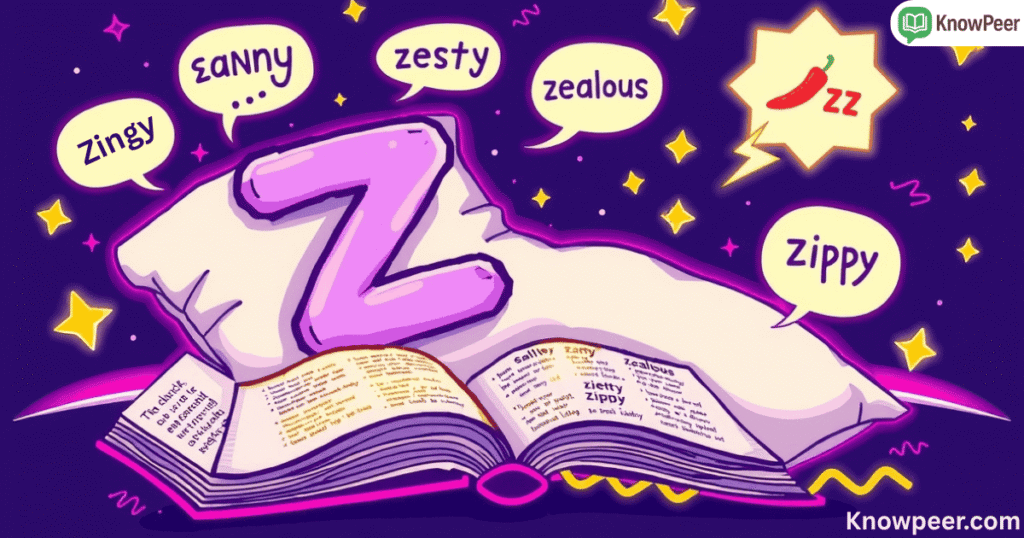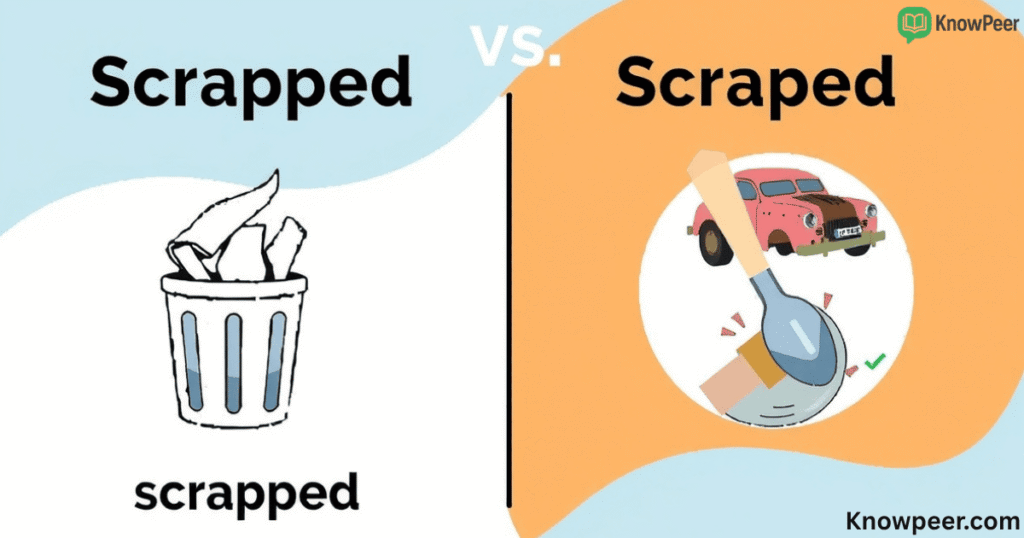In the world of texting and instant messaging, “MK” is one of those short forms that people often see but might not fully understand. If you’ve ever received a message saying just “MK” and wondered what it meant, you’re not alone. This simple two-letter slang carries a lot more meaning than meets the eye. In this article, you’ll get a clear, easy-to-understand explanation of what MK means in texting, where it comes from, and how to use it properly so your messages never get misunderstood.
Understanding online slang is important because it shapes how we communicate in a digital world. The small abbreviations we use every day help speed up conversations but can sometimes confuse those unfamiliar with the terms. So, let’s dive deep into the meaning of MK in texting, why people use it, and what you should keep in mind when you decide to reply with this little phrase.
What Does MK Mean in Texting?
When you see “MK” in a text, it usually means “Okay” or “Alright.” It’s a casual, quick way to agree with someone or acknowledge their message. People often use MK as a shorter, more relaxed form of “OK” or “K.” But unlike “K,” which some find abrupt or rude, MK can feel a bit softer, though it depends on the tone and context.
Texting is fast and informal. People try to save time and effort by typing as little as possible while still getting their point across. That’s how MK became popular. It’s like a quick nod in a conversation—brief, but understood.
However, while MK often means “okay,” it can sometimes feel a bit cold or distant. That’s why tone matters. In some cases, if someone texts only “MK,” it might come off as annoyed or uninterested. So, knowing when to use it is as important as knowing what it means.
Some people also add emojis or extra letters to soften or change the meaning. For example, “MK :)” feels friendly, while just “MK” alone might seem curt. The takeaway is that MK is shorthand for agreement, but its tone depends on the situation and the relationship between the people texting.
Origins and Popularity of “MK” in Online Chat
The exact origin of MK in texting is hard to pin down, but it seems to have grown naturally as part of online chat culture, especially among younger users who want to communicate quickly. Its use has spread widely across platforms like WhatsApp, Instagram, Snapchat, and even texting apps on phones.
People often choose MK instead of “OK” because it feels a little different—less formal but still clear. Its rise matches the general trend of texting slang evolving to make communication snappier and more efficient.
Interestingly, the use of MK can vary depending on where you live or the community you belong to. In some regions, people might prefer “K” or “OK,” while in others, MK has become the default. Age also plays a role. Younger generations tend to use MK more often, especially in casual chats with friends.
The popularity of MK is tied to how fast people want to type and respond. In a world where conversations can happen at lightning speed, a quick MK saves time without losing meaning. However, it’s not just about speed. It also reflects how digital communication is constantly changing and adapting to the needs of its users.
How to Use MK Correctly and When to Avoid It
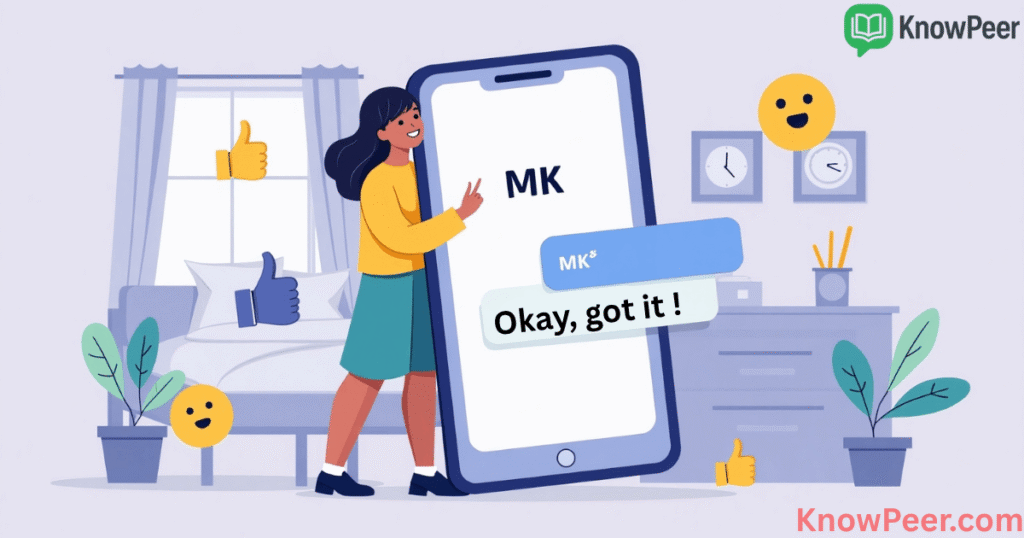
Using MK in your texts seems simple, but it’s important to understand when it fits and when it doesn’t. In casual conversations with friends or family, MK works great as a quick confirmation or agreement. For example, if a friend says, “I’ll pick you up at 7,” replying with MK shows you got the message.
However, MK can sometimes come off as cold or dismissive, especially if the other person expects a longer reply or more emotion. For instance, in serious or sensitive conversations, replying with just MK might seem like you don’t care or are brushing off the topic. In those cases, it’s better to use more words or add a friendly emoji to show warmth.
Also, avoid using MK in professional or formal texting. In work-related chats, full words and clear sentences keep communication respectful and avoid misunderstandings.
If you want to sound friendlier, you can try alternatives like “Okay,” “Sure,” or even “Got it!” These options often feel warmer and more engaging. Sometimes, adding a smiley face or other emoji after MK can soften the tone, making it sound less abrupt.
Here’s a simple table comparing MK with some similar responses to help you choose when texting:
| Response | Tone | Best Use Case | Possible Misinterpretation |
| MK | Neutral to slightly cold | Casual chats, quick replies | Could seem rude or distant |
| K | Very abrupt | Very casual, among close friends | Rude or uninterested |
| OK | Neutral to polite | General use, formal or informal | Too formal for some casual chats |
| Sure | Friendly, positive | Agreeing, showing willingness | None |
| Got it! | Clear and engaged | Confirming understanding | None |
In texting, context is king. Knowing who you’re texting and what kind of message they expect will help you pick the right words—and avoid accidental misunderstandings.
Real-Life Examples of MK in Texts and Social Posts
Seeing how MK works in real conversations makes it easier to understand. Imagine you’re texting a friend to meet up. They say, “See you at 5?” You reply with MK. This quick reply tells them you’re on board without needing a long sentence. It’s efficient and clear.
On social media, you might see MK used in comments or replies. For example, someone might say, “Don’t forget the meeting tomorrow,” and the reply is simply MK. It’s like a digital nod to acknowledge the reminder.
But sometimes, people use MK in a way that feels less friendly. For instance, if someone asks, “Can you help me with this?” and you reply only with MK, the other person might think you’re being short or uninterested. So, while MK is handy, it’s not always the best choice for sensitive topics.
In group chats, MK often speeds up conversations. When multiple people talk at once, a quick MK can keep the flow going. However, in more personal one-on-one chats, it’s good to add a bit more warmth or detail.
Alternative Meanings of MK in Other Contexts
While MK mostly means “okay” in texting, it can have other meanings depending on where and how it’s used. For example, MK is sometimes shorthand for people’s initials or brand names. In gaming, MK often refers to “Mortal Kombat,” a popular fighting game series. In business, MK can stand for “Marketing.”
Because of these different meanings, context always matters. If someone texts MK in a conversation about video games, they might mean “Mortal Kombat” instead of “okay.” Always consider what the chat is about to understand the correct meaning.
When in doubt, don’t hesitate to ask for clarification. A simple “What do you mean by MK?” can clear things up and prevent confusion.
Common Variations and Similar Slang
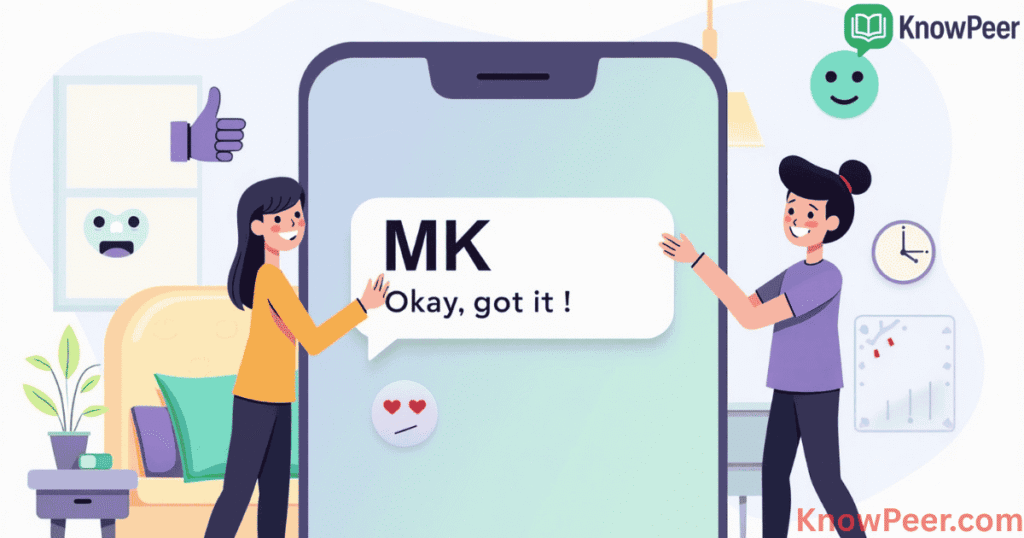
MK is part of a larger group of texting slang that people use to keep conversations fast and casual. Similar short replies include K, OK, KK, and OKAY.
K is the shortest form and can sometimes feel blunt or rude. Some people find it annoying because it sounds like the sender isn’t interested in the conversation. Adding more letters, like KK or OKAY, usually makes the tone friendlier.
Other slang like “yup,” “yeah,” or “gotcha” serve the same purpose but carry different feelings. For example, “yup” feels casual and a bit playful, while “gotcha” implies understanding.
Choosing between these depends on how close you are to the person and the mood of the conversation. Knowing these alternatives helps you sound natural and polite in your texts.
Summary Table of Common Texting Replies
| Slang | Meaning | Tone | When to Use |
| MK | Okay | Neutral, quick | Casual, quick acknowledgment |
| K | Okay | Abrupt, sometimes rude | Very informal, close friends only |
| KK | Okay | Friendly, casual | Friends, informal chats |
| OK | Okay | Neutral, polite | Most situations |
| Yup | Yes | Casual, playful | Informal, friendly chats |
| Gotcha | Understood | Clear, engaged | Confirming understanding |
Understanding MK and similar slang can make texting smoother and help you avoid miscommunication. It’s a small phrase but packed with meaning, tone, and social cues.
By paying attention to context and choosing your words carefully, you can keep your digital chats clear, friendly, and effective. So next time you see MK pop up in your messages, you’ll know exactly what it means and how to respond like a texting pro.
Sure! Here’s a strong conclusion and a section with suggested sources for your article, written in the same easy-to-read and friendly tone.
Conclusion
Text slang is always changing, but MK in texting has found a solid spot in how we talk online. It might look simple, but it carries different tones based on how and when it’s used. Most of the time, MK means “okay”—a quick, relaxed way to agree or confirm. But be careful: sometimes it can sound cold or dismissive, especially in serious conversations.
Understanding the real meaning behind short forms like MK helps you text smarter. Now that you know how to use it—and when not to—you’ll avoid confusion and keep your messages clear. Whether you use MK, OK, or something more expressive, the key is to match your reply to the tone of the conversation. Because even a short message can say a lot.


